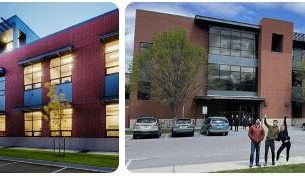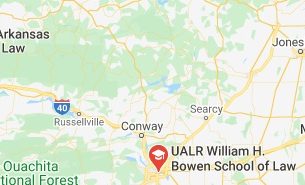Kansas is located exactly in the middle of the United States, between Missouri (east), Colorado (west), Nebraska (north), and Oklahoma (south). This page contains information for those who want to travel through this state, want to make a tour with, for example, a camper or rental car and are looking for useful background information to orient themselves further. The state is divided into six regions, namely North Central, North East, North West, South Central, South East, and South West.
In Kansas, nothing is more unpredictable than the weather. There is an erratic continental climate, with mostly mild winters and scorching hot, dry summers. Due to the extreme weather conditions in the summer months, severe thunderstorms and tornadoes are a regular occurrence – the state is located in what is known as ‘Tornado Alley’. The mercury easily reaches 30°C in July. The winter months have temperatures around freezing, although a heavy snowstorm can appear out of the blue. In general, the east is the wettest region of the state, receiving about 4 feet (100 cm) of precipitation annually.
Best travel time
If you want to visit The Sunflower State, it is best to come in the spring or at the end of the summer. Early May and June, or September and October have the most pleasant temperatures and the least crowds.
Flora in fauna
Kansas’s green-yellow landscape is quite varied. The Flint Hills to the east provide a welcome respite from the state’s vast wheat fields, as well as the forested Southeast and verdant valleys along the Cimarron River. Kansas is one-third covered in grass, which appears in more than 60 species. Common trees include red cedars, black walnuts, nettle trees, and sycamores. By far the most abundant flower has been elevated to the state’s logo: the sunflower.
Main cities
The state capital of Kansas is Topeka. In addition, larger cities such as Wichita, Lawrence and Kansas City are often mentioned.
Dodge City
Probably one of the most famous towns in the Wild West is Dodge City. The infamous Santa Fe Trail ran right through it, which ran from Franklin, Missouri to Santa Fe, Mexico. Immense herds and thousands of covered wagons with merchandise and fortune seekers moved back and forth over this trade route from 1821, plagued by heat and malicious Indians. Dodge City started as a fortress, but quickly developed into a bustling city over which the law had little grip. Not even a sheriff like the legendary Wyatt Earp could do that. If your mouth is watering at Tombstone, don’t miss Dodge City.
Dwight D. Eisenhower
The 34th President of the United States is a man best known for his role as the Supreme Commander of the United States Armed Forces during World War II: Dwight “Ike” Eisenhower. Abilene is home to the Presidential Center, the main attractions of which are the Presidential Library, his cemetery, and the home where he spent much of his childhood.
Lawrence
Not only is this a very pleasant city to walk in, but the campus of the University of Kansas also offers many attractions. These include Annabelle, a 140-million-year-old dinosaur and Comanche, General Custer’s stuffed horse, here in the fascinating Natural History Museum. The Spencer Museum of Art houses a huge collection of Asian art.
Topeka (Kansas)
| Topeka | |
| City in the United States | |
| Location | |
| State | Kansas |
| County | Shawnee County |
| Coordinates | 39°6’NB, 95°40’WL |
| General | |
| Surface | 159,21 km² |
| – land | 155,84 km² |
| – water | 3,37 km² |
| Residents (April 1, 2010) |
127.473 (818 inhabitants/km²) |
| Politics | |
| Mayor | Michelle De La Isla (D) |
| Website | topeka.org |
| Photo’s | |
Topeka is the capital of the US state of Kansas and the capital of Shawnee County. In 2000, the city had a population of 122,377 and the agglomeration with 224,551 inhabitants. Topeka is the fourth largest city in the state of Kansas after Wichita, Overland Park and Kansas City.
History
Topeka was founded in 1854 on the site of a ferry service across the Kansas River, 95 miles west of Kansas City. Construction of a rail link between Topeka and Santa Fe began in 1859. Although the final goal of Santa Fe was not really reached – it was easier to build the line through Lamy further south than through the hills surrounded by Santa Fe – the Atchison, Topeka & Santa Fe Railway grew into a major railway company. After Kansas became a state of the United States in 1861, Topeka was chosen as the capital.
In 1951, Topeka’s school board was sued by the ACLU, on behalf of black student Linda Brown, who had to walk a mile to her school, while a white school was located a few blocks away. The Brown v. Board of Education case finally ended racial segregation in American education.
On June 8, 1966, an F5 tornado caused more than $100 million in damage, making it one of the costliest tornadoes in U.S. history.
Demographics
15.1 % of the population is older than 65 and 35 % consists of single – person households. Unemployment is 4.4 % (census figures 2000).
About 8.9% of Topeka’s population are Hispanics and Latinos, 11.7% are of African origin and 1.1% of Asian origin.
The population increased from 120,847 in 1990 to 122,377 in 2000.
Climate
In January the average temperature is -2.9 °C, in July it is 25.8 °C. There is an average annual rainfall of 894.8 mm (data based on the measurement period 1961-1990).
Trivia
- The US Navy has named three ships USS Topeka in honor of the city.
- Washburn University was founded in 1865, where Bob Dole, among others, graduated.
- The controversial religious organization Westboro Baptist Church is based in Topeka.
Nearby places
The figure below shows nearby places in a radius of 24 km around Topeka.
Topeka
- Auburn (18 km)
- Hoyt (23 km)
- Meriden (20 km)
- Silver Lake (16 km)
- Willard (23 km)
Famous residents of Topeka
Born
- Charles Curtis (1860-1936), United States Vice President, Senator, and Attorney
- Perry George Lowery (1869-1942), composer, conductor, cornetist and circus musician of African American descent
- Gatemouth Moore (1913–2004), blues and gospel singer, composer and pastor
- Gwendolyn Brooks (1917-2000), poet and writer
- Pat Roberts (1936), Senator for Kansas
- Linda Brown (1943-2018), burgerrechtenactiviste
- Kerry Livgren (1949), guitarist and keyboardist (Kansas)
- Roscoe Born (1950), actor
- Jayne Houdyshell (1953), actrice
- Annette Bening (1958), actress
- Nathan Phelps (1958), American-Canadian author, gay rights activist, and speaker on religion and child abuse
- Katrina Leskanich (1960), zangeres (Katrina and The Waves)
- Travis Schuldt (1974), actor
- Gary Woodland (1984), golfer
Died
- Joseph Henry Ott (1929-1990), composer, music educator and trumpet player
- Fred Phelps (1929-2014), predikant




